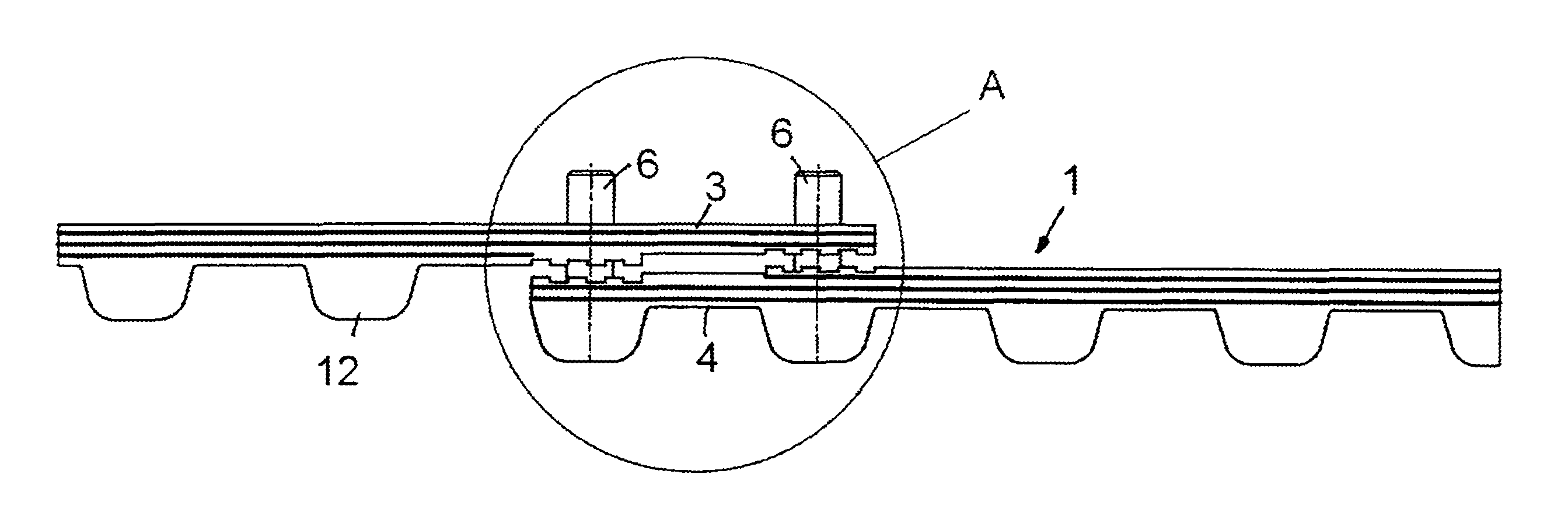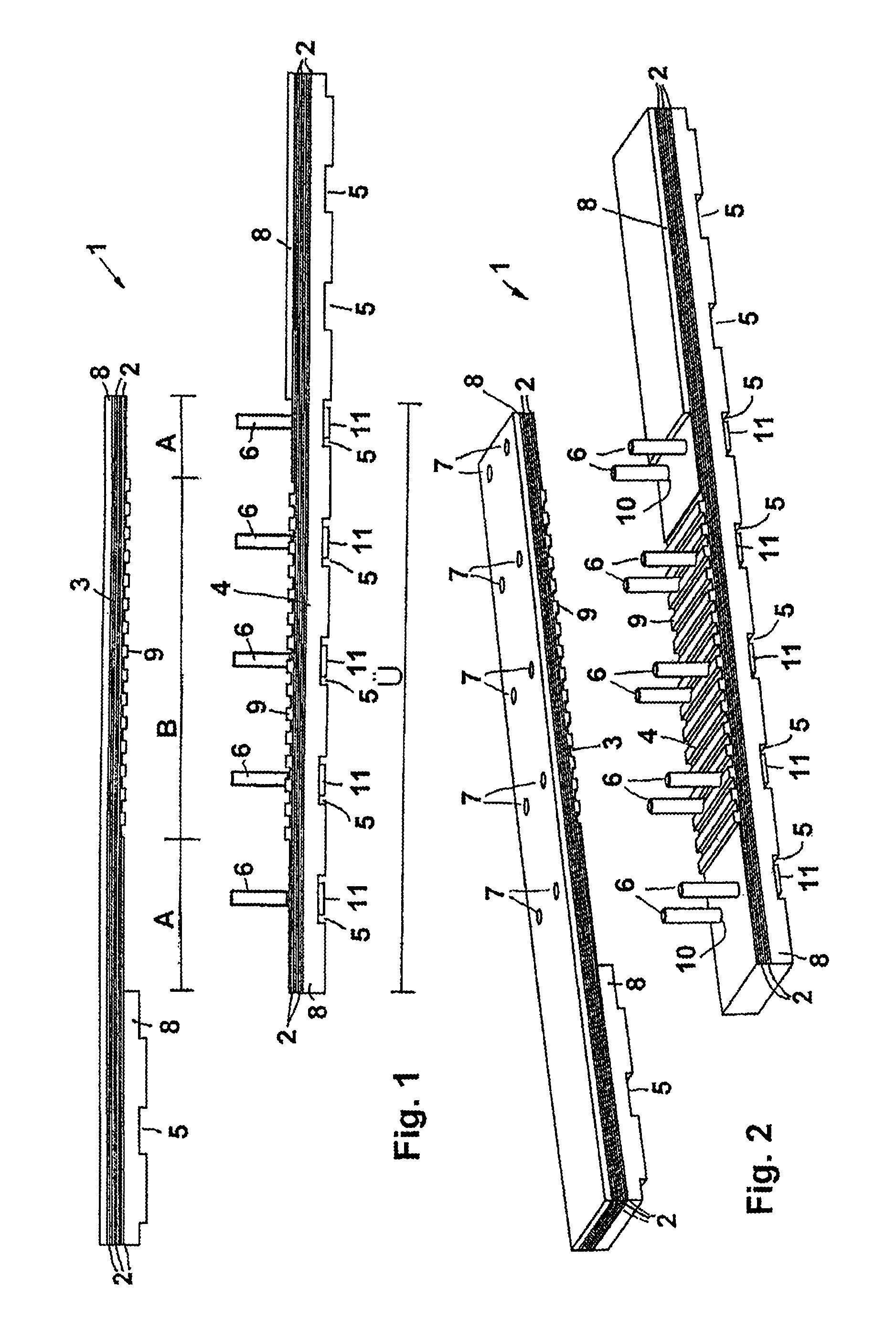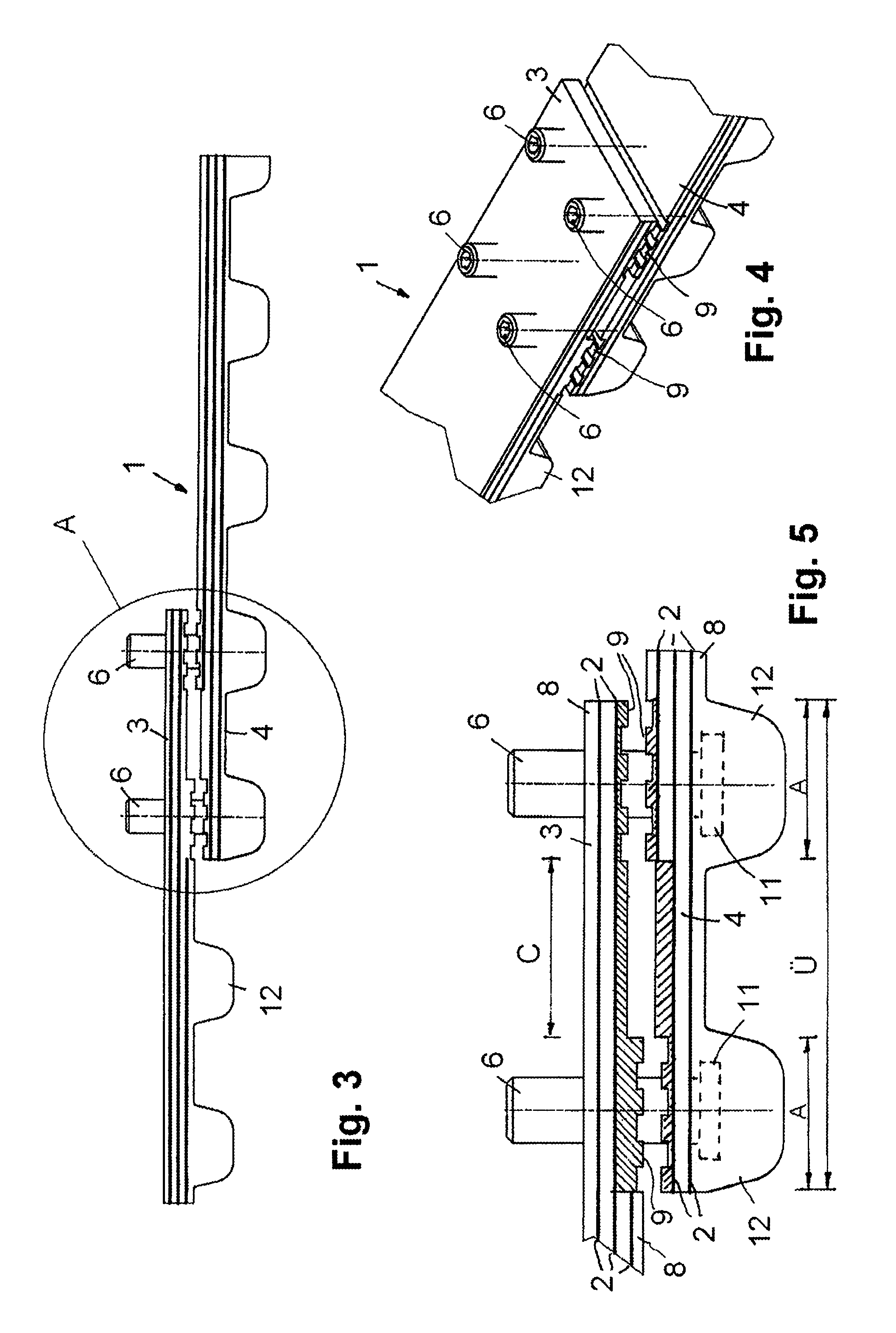Belt as a traction mechanism for belt conveyors of agricultural machines
a technology of traction mechanism and belt conveyor, which is applied in the directions of belt fastening, belt/chain/gearing, transportation and packaging, etc., can solve the problems of loss of strength and load-carrying capacity at the connection location, and achieve the effect of increasing tensile strength
- Summary
- Abstract
- Description
- Claims
- Application Information
AI Technical Summary
Benefits of technology
Problems solved by technology
Method used
Image
Examples
Embodiment Construction
[0024]In the following exemplary embodiments, the same reference numerals are used for the same components or for components that act in the same manner.
[0025]The belts 1 illustrated in the drawing are used as traction mechanisms for conveyor bands of agricultural machines. Such conveyor bands generally have two or more belts 1 that extend parallel to one another, and that are interconnected, e.g. by means of cross members.
[0026]The belts 1 of all of the embodiments are comprised of a cross-linked polymer that is reinforced with fabric plies, and that have three fabric plies 2, which are respectively separated from one another by rubber layers and are covered on the outer sides of the belt 1 by means of a polymer layer 8. To produce their endless configuration, the belts 1 are provided with a region of overlap Ü. In this region of overlap Ü, the two ends of the belts 1 have a stepped configuration such that at one end an upper step 3 exists, and at the other end a lower step 4 exist...
PUM
 Login to View More
Login to View More Abstract
Description
Claims
Application Information
 Login to View More
Login to View More - R&D
- Intellectual Property
- Life Sciences
- Materials
- Tech Scout
- Unparalleled Data Quality
- Higher Quality Content
- 60% Fewer Hallucinations
Browse by: Latest US Patents, China's latest patents, Technical Efficacy Thesaurus, Application Domain, Technology Topic, Popular Technical Reports.
© 2025 PatSnap. All rights reserved.Legal|Privacy policy|Modern Slavery Act Transparency Statement|Sitemap|About US| Contact US: help@patsnap.com



